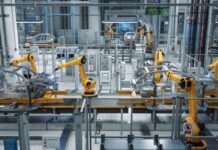
Global economic instability and shifting political conditions are placing immense pressure on Australian manufacturers, with supply chain disruptions driving up costs and making it harder to maintain profitability, prompting calls from ECI Solutions for improved operational visibility.
However, many still rely on fragmented and outdated systems, resulting in silos of business-critical data, ECI Solutions said in a media release.
According to ECI, this lack of integration makes it difficult to monitor inventory, production schedules, and resource usage effectively.
Andrew Mamonitis, APAC vice president of manufacturing at ECI Solutions, said visibility remains a key issue for many manufacturers, especially those with essential data trapped in disparate systems.
“The inability to access or integrate this data means they’re making critical business decisions without a complete picture, risking costly errors and inefficiencies,” he said.
He pointed to production scheduling as a particular area of concern. When delays affect even a single component, entire production lines can be halted, leading to missed deadlines and reduced productivity.
Mamonitis said, “Manufacturers frequently encounter difficulties maintaining accurate schedules, especially when each production step depends on precise inventory management and timely availability of components.”
To address these challenges, ECI Solutions is advocating for greater adoption of enterprise resource planning (ERP) systems. ERP platforms consolidate information across procurement, inventory, finance, and production, offering manufacturers real-time insights and the ability to respond proactively to disruptions.
“Implementing an ERP solution isn’t about replacing people or just upgrading software; it’s about improving the agility and resilience of the entire business,” Mamonitis said.
“Unifying systems lets manufacturers identify inefficiencies quickly, anticipate bottlenecks, and take timely corrective actions.”
He also noted that resistance to upgrading legacy systems remains common, often due to concerns about implementation complexity and staff retraining. However, Mamonitis argued that modernisation supports growth and workforce development, rather than reducing jobs.
“The challenge is changing the mindset and communicating the value of these improvements clearly. Businesses should focus on reskilling and upskilling staff, showing how new tools make their work easier and free them to contribute to higher-value tasks,” he said.
Change management also plays a critical role during ERP adoption, yet ECI Solutions noted it is often undervalued. Mamonitis said sustainable change depends on employee engagement and buy-in, rather than just technical training.
“People are more likely to embrace a new system when they understand how it simplifies their tasks and improves their work experience,” he said.
As businesses evolve, ERP systems must also be reviewed and adjusted regularly. Without ongoing management, systems can drift away from a company’s strategic direction.
“Leaders need to establish clear processes for identifying when and how their ERP configurations should evolve, instead of waiting until inefficiencies force their hand,” Mamonitis said.
The shift towards cloud-based ERP solutions is another trend ECI Solutions highlights, offering improved flexibility, scalability, and cybersecurity.
At the same time, Australian manufacturers are dealing with broader challenges including labour shortages, difficulty attracting younger workers, competition from overseas producers, and rising local costs.
Although government support exists, ECI Solutions said businesses are increasingly turning to direct partnerships with ERP providers for more immediate and tailored solutions.
“Futureproofing a manufacturing business demands building resilience through improved operational visibility, streamlined processes, and adaptable technologies,” Mamonitis said.
“Proactively modernising systems and optimising resources positions Australian manufacturers to survive uncertainty, capitalise on emerging opportunities, and maintain a competitive edge in a rapidly changing market.”




















